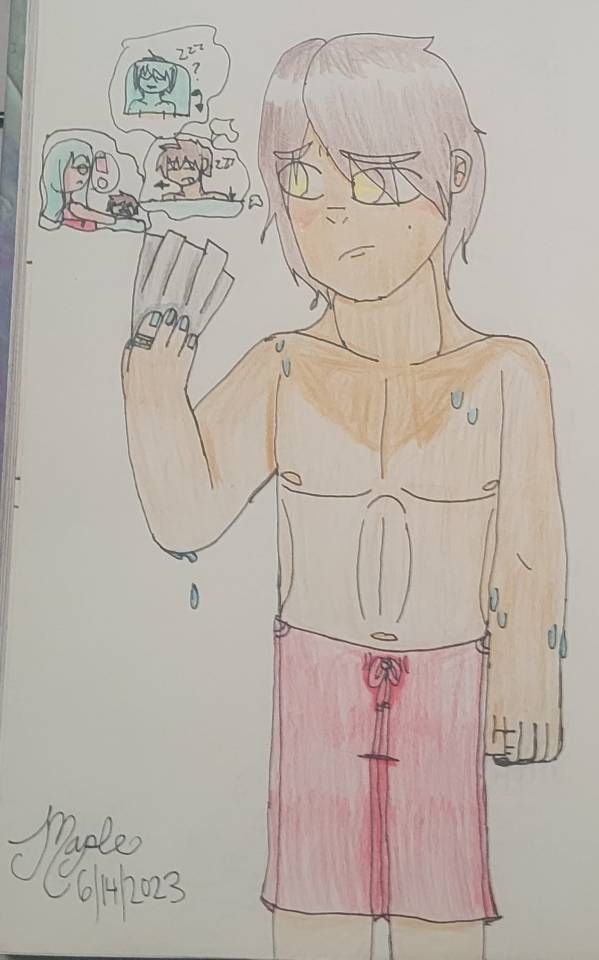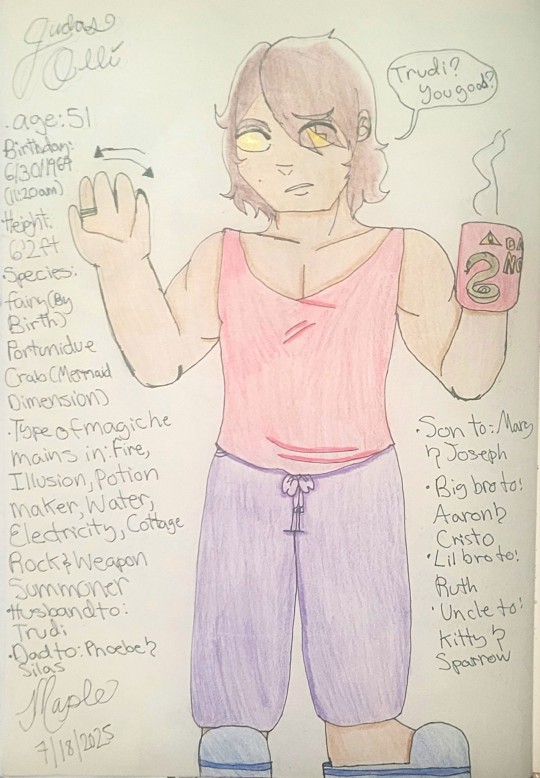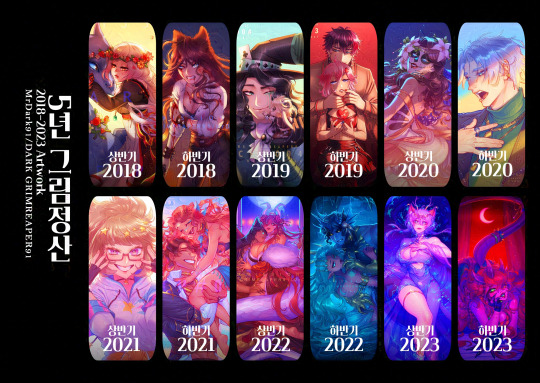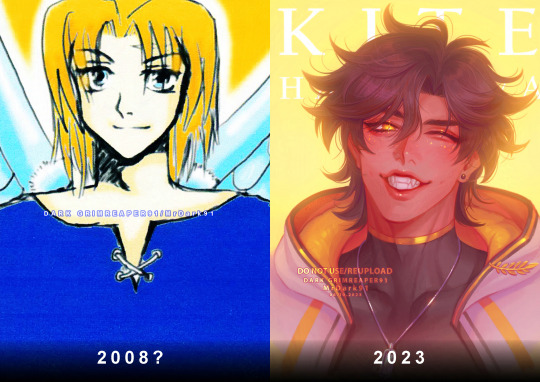#ArtEvolution
Explore tagged Tumblr posts
Text


Life of Lea: Background Characters: Part 21: Judas Olli
#bisexual#lifeoflea#artevolution#original art#original story#original drawings#my art#sidecharacter#original scenery#original character#oc
4 notes
·
View notes
Text
Start of the year vs end
Hell yea, art evolution


10 notes
·
View notes
Text

#artoftheday#artevolution#artimprovement#digitalart#charactersketch#artistsoninstagram#art#artists on tumblr#illustrationofday#digtal illustration#small creator#small artist#artistsupportartists#artistsupport#artist on tumblr#art community#art poll#my polls#poll time#new oc#new oc alert#oc artist#oc#oc art#oc artwork#original character art#originalcharacter#original character
2 notes
·
View notes
Text

Trying my best to improve for the better every year!🫡✨ Template by @/IPRGYI2 https://x.com/IPRGYI2/status/1738987923792646536?s=20
3 notes
·
View notes
Text
Photos of projects in progress. The multi-armed creature is an old drawing started in 2020 or so that I'm finally taking the time to finish. Last year, after finding a folder full of old sketches, I set myself the goal of finishing all my old paintings in progress. It's an interesting exercise to finish old paintings in your current style. . FR: Photos en vrac de projets en cours. La créature à plusieurs bras est un vieux dessin démarré en 2020 environ que je prends enfin le temps de terminer. L’année dernière après avoir retrouvé une pochette pleine de vieux croquis je me suis donnée comme objectif de terminer toutes mes anciennes peintures en cours. C’est un exercice intéressant de finir d’anciennes peintures avec son style actuel. .





#creaturedesign#wipart#artevolution#artisticprocess#atelier#artistepeintre#peinturepaysage#fantasyart#illustration#coulisses#behindthescene#peinture
0 notes
Link
#artdiversity#artevolution#artexhibitions#arthistory#artinnovation#artmarketchallenges#artmedia#artsculpturegarden#Britishartists#ContemporaryArtGallery#DoHoSuh#FriezeArtFair#GraysonPerry#Hoxtongallery#internationalartgallery#Londonartscene#modernart#SarahSze#Veniceartspace#VictoriaMiro#YayoiKusama
0 notes
Text
#BalineseArt#ContemporaryArt#UbudArtScene#CulturalFusion#ArtEvolution#AntoninoLaVelaArtBlog#MadeWianta#INyomanGunarsa#ARMA#NekaArtMuseum#BaliArt#ArtisticJourney
0 notes
Text

From Copying to Creating: My Turning Point
For a long time, I spent my creative energy copying photographs.
I wasn’t tracing — I was redrawing everything by hand, scaling it down, chasing perfect proportions, pushing for hyperrealism. I loved detail. I still do. But over time, I hit a wall. Something started to feel… empty.
A photograph already captures a moment — as seen by the photographer’s eye, their light, their angle, their emotion. The more I copied, the more I realized I wasn’t telling my story. I was just recreating someone else’s.
That realization hit hard. I didn’t know what my own style was. And finding it wasn't some magical moment where I just decided to be different. No. It took me years.
After stepping away from realism, I spent nearly three years experimenting — trying everything, failing, starting over, getting lost, discovering new ways to express myself. Slowly, very slowly, something began to form. My own line. My own language. And once it started forming, it evolved fast — like it had been waiting for me all along.
Still, realism was a huge part of my journey. It taught me discipline, precision, and how to truly see.
So today, I want to share one of my last fully realistic drawings — done with regular pencils on A4 paper. It reminds me of where I came from, and why I chose a different path.
#drawing#tumblr draw#my draws#sketch#ArtEvolution#RealismToStyle#ArtistGrowth#CopyingToCreating#Hyperrealism#SketchbookJourney#FindingMyStyle#DrawEveryday#artwork#art#original art#my art#artists on tumblr
0 notes
Text

The Evolution of 2D Animation Techniques
From the charm of hand-drawn classics to the sleek lines of digital animation, 2D animation has come a long way! 🎞️ This infographic walks you through the journey—starting from traditional cel animation to the rise of digital tools and hybrid techniques used by modern studios today. 🖌️💻
Whether you're a die-hard animation fan or just love seeing how creative processes evolve, this visual timeline is packed with nostalgia and insight. ❤️
📌 Check it out and see how far 2D animation has come!
#2DAnimation#AnimationHistory#DigitalAnimation#CelAnimation#AnimationLovers#ArtEvolution#AnimationTechniques#TraditionalToDigital#TumblrArt#CreativeJourney
0 notes
Text

Still Life: Melon on Beach (2025)
I’ve been doing a lot of self-reflection lately. After much thought, I’ve come to realize that my art needs to evolve. No more surrealism. No more distractions. No more cartoons. It’s time I take things seriously.
This marks a shift toward intentional stillness- a deeper focus on form, balance, and the quiet weight of simplicity.
Introducing: Still Life: Melon on Beach (2025) A study in contrast: nature against nature. The melon, firm and round- the beach, soft and yielding. Both exist, yet neither demands attention. They simply are.
I’ve chosen this subject to represent my own journey- the pursuit of balance in an unbalanced world. After all… life is like a melon on the beach. Always present. Rarely understood.
#StillLife#DigitalArt#ArtEvolution#Minimalism#FruitStudy#ArtGrowth#CalmAesthetic#VisualBalance#melon#beach
0 notes
Text
Watch this incredible metamorphosis! 🤯
From a real photo to cartoon and then manga style—AI art at its best! Which style do you like the most? Let me know in the comments! 🎨
#AIArt#ImageMorphing#Transformation#Metamorphosis#PhotoToManga#PhotoToCartoon#ArtEvolution#AIStyleTransfer#DigitalArt#CreativeEffect#TrendingEffect#ArtLover#MangaStyle#CartoonStyle
0 notes
Text
Art History and AI
“The Art of a Generation..and the Next”
American art has played a significant role in shaping the identity of the Baby Boomer generation, as it reflects their social values and cultural revolution. The Boomers, born between 1946 and 1964, were at the forefront of movements like hippie modernism, which emphasized peace and love, reflecting their experiences during the civil rights movement and the upheaval of the 1960s. Influential artists like Andy Warhol used pop art to critique consumerism and champion individuality, while Robert Rauschenberg blended different media to challenge traditional boundaries of art. Moreover, artists such as Cindy Sherman and Barbara Kruger in the postmodern era addressed themes of identity, gender, and societal norms, mirroring the Boomers' quest for self-discovery and authenticity. Their artistic expressions encapsulated the cultural markers of the Baby Boomers' youth, driving movements that altered the landscape of American art and resonating deeply with the generation's rebellious spirit and desire for change.
American art has served as a vital medium for Generation X, reflecting their unique identity, cultural experiences, and societal values. This generation, often characterized by disillusionment and skepticism, found expression through artistic movements such as Neo-Expressionism and Postmodernism. Artists like Jean-Michel Basquiat and Julian Schnabel utilized raw emotional styles and bold imagery in their works, conveying a sense of urgency and social commentary that resonated with their cohort's experiences of alienation and societal critique. Meanwhile, Cindy Sherman and Barbara Kruger embraced concepts of identity and consumerism, using irony and cultural references to challenge traditional notions of art and authority.
The values seen in Generation X art emphasize individualism, authenticity, and a critical approach to mass media and consumer culture, which stand in stark contrast to the more optimistic, idealistic themes celebrated by the Baby Boomer generation during movements like Abstract Expressionism and Pop Art. For instance, while Baby Boomers focused on expressive freedom and a celebration of popular culture through bright imagery, Generation X artists often embraced irony and a raw aesthetic that questioned societal norms and authority. Furthermore, the generation's engagement with graffiti and street art, as seen in the works of Keith Haring and Basquiat, highlights a rebellious spirit aimed at reclaiming public spaces and confronting social issues. This divergence illustrates a fundamental conflict between the idealistic expressions of Boomers and the critical, often cynical perspective of Generation X in their artistic outputs.
Access to computers and digital technology has significantly transformed American art and its influence on Millennials and younger generations. Digital tools have expanded artistic possibilities, allowing artists to experiment with new mediums, engage with global audiences, and challenge traditional art concepts. This shift has fostered a generation of artists who embrace accessibility, collaboration, and messages that resonate with societal themes, such as social justice and environmentalism. As these generations continue to shape the art world, the integration of generative AI imagery poses both opportunities and challenges, particularly regarding authorship, creativity, and the socio-economic impacts of art.
Digital technology has revolutionized how artists create, share, and experience art. Artists now use various digital tools, including software for graphic design, digital painting, and 3D modeling, to push the boundaries of artistic expression and introduce innovative techniques. The internet enables rapid dissemination and accessibility of artwork, making it possible for artists to reach global audiences without traditional barriers. Furthermore, social media platforms have become essential for promoting art and connecting creators with their audiences, giving rise to a culture where art is more participatory and community-driven.
Millennials and Gen Z have distinct preferences regarding art styles and messages, frequently favoring contemporary art forms that reflect their values and experiences. They are particularly drawn to street art, digital art, and art that incorporates elements of activism, known as "artivism," which highlights social, political, and environmental issues. The use of humor and irony, especially through memes and internet culture, characterizes the artistic expressions of these generations. These movements address the complexities of modern life and push for dialogues about identity, inclusivity, and sustainability within the artistic community.
Generative AI is set to play a pivotal role in the evolution of American art, offering artists new tools to explore creativity and redefine artistic boundaries. By utilizing algorithms and machine learning, artists can generate complex visuals and interactive installations, allowing for a unique collaboration between human creativity and technological innovation. AI can provide personalized art experiences, making it possible to engage audiences in ways that traditional art forms have not. However, the use of AI-generated artwork also raises questions about authorship, originality, and the ethical implications of using algorithms based on existing works without consent. As artists continue to embrace these technologies, generative AI has the potential to enrich the artistic landscape while challenging our understanding of creativity and the role of the artist.
The influence of government and corporate entities on the growth and use of generative AI could significantly impact the future of American art. Potential risks include the prioritization of profitable AI applications over artistic integrity, resulting in a commercialization of art that may stifle creative expression. Governments might implement regulations that shape how AI is used in artistic contexts, affecting both the autonomy of artists and the accessibility of AI tools. Additionally, the commodification of AI-generated art could lead to a scenario where corporate entities control the narratives and representations within the artistic community, consequently marginalizing certain voices and viewpoints.
Moving forward, it will be crucial for artists, technologists, and policymakers to collaborate in establishing ethical guidelines and equitable policies that foster creativity while protecting the rights of artists in the age of generative AI. Emphasizing artistic diversity, authentic representation, and inclusive practices will be vital to ensure that the evolution of American art reflects the multifaceted experiences and values of its creators and audiences.
Images and Text generated using AI. Images represent duty and joy that frame generations and bind us all together,
Visit (IRL or Online) these Museums and Galleries to view American Art and experience the impact of each generation.
1. Smithsonian American Art Museum https://www.si.edu/museums/american-art-museum
The Smithsonian American Art Museum in Washington, D.C., offers a comprehensive collection of American art that spans various periods and artistic movements. Their website provides resources for viewing art collections and learning about exhibitions, artist biographies, and educational programs.
2. Whitney Museum of American Art https://whitney.org/
Located in New York City, the Whitney Museum focuses on 20th and 21st-century American art. The museum's website features a rich archive of artworks, exhibitions, and events, along with educational resources on themes including the influence of different generations on American art.
3. Philadelphia Museum of Art https://philamuseum.org/
The Philadelphia Museum of Art houses an extensive collection of American art. Their website offers virtual tours, collection highlights, and access to information about American art movements and artist profiles, making it a valuable resource for understanding generational influences in art.
4. The Art Institute of Chicago https://www.artic.edu/
The Art Institute of Chicago provides a significant collection of American art and is known for its educational programs. The website includes access to artworks, exhibitions, and a wealth of information related to American art history and the impact of various generations.
5. National Gallery of Art https://www.nga.gov/
The National Gallery of Art in Washington, D.C., features a broad collection encompassing American art. Its website is a resource for viewing artworks, learning about significant artists, and exploring the evolution of American art across different generations.
#GenerationalArt#MillennialsInArt#GenZArtRevolution#DigitalArtImpact#ArtandTechnology#TechInArt#CreativeGenerations#ArtEvolution#SocialMediaArt#InnovationInArt#ArtisticExpression#NewMediaArt#CulturalShift#ArtistryInTheDigitalAge#ArtForChange
1 note
·
View note
Text

I put a new drawing under the old one, behold: Growth! Idfk tbh, but I do just be doing things. Char's name is 'Emoticia' btw!
1 note
·
View note
Text
youtube
Check out my YouTube short of my poster for my Culture Shock series
#youtube#youtube shorts#artevolution#artimprovement#art process#poster art#small artist#small creator#speed paint#speed drawing
0 notes
Text

My (probably) first 100% CG art that's done in PS instead of Paint VS. my recent art! Not sure about the year but I think I was either in grade6 or 7?🤔 It's so old I don't even have the original digital file, but the scanned version of the printed image like???
#illustration#digitalart#イラスト#art#digitalpainting#MrDark91art#myart#digital art#digital drawing#digital painting#digital illustration#artevolution
2 notes
·
View notes
Text
Capturing the fiery evolution from Fennekin to Delphox in every brushstroke! 🔥🎨
#PokemonArt#FennekinToDelphox#ArtEvolution#FireType#PokémonPainting#ArtJourney”#pokemonfanart#pokemon#pokemonartist#pokemoncommunity#artoftheday#pokemoncreativity
0 notes